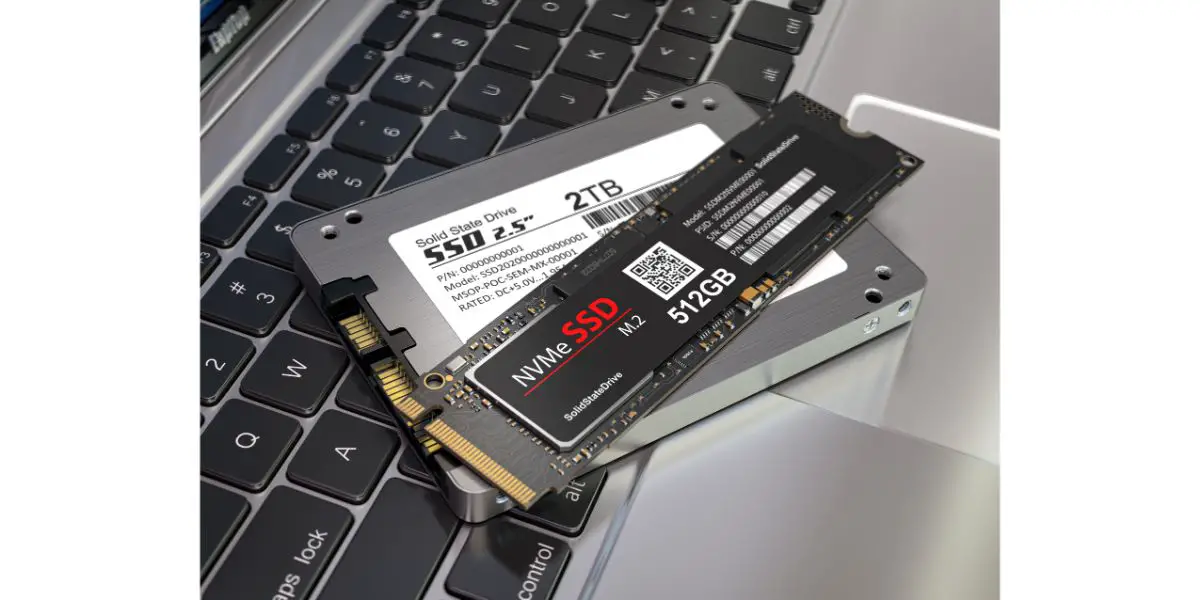Disclaimer: This post may contain affiliate links, meaning we get a small commission if you make a purchase through our links, at no cost to you. For more information, please visit our Disclaimer Page.
With every passing year, laptops get more and more sophisticated. Each new iteration seems to be slimmer, lighter, faster, and better in every way. But why does the current crop of laptops have so little storage?
Table of Contents
Are Storage Drives on Laptops Getting Smaller?
Until recently, most laptops used to come with 500 GB of storage or more. However, laptops often come with smaller hard drives, with 256 GB and 128 GB models being among the most ubiquitous in the market. Does this mean laptop drives are getting smaller?
Storage drives on laptops are getting smaller as laptops shift from HDD to SSD ones. This is because SSDs cost more per GB and manufacturers want to keep the prices of their devices competitive. Laptops are also getting more compact, allowing less room for bigger drives.
SSDs Are Replacing HDDs in Laptops
SSDs (Solid State Drives) offer many advantages over the older HDD or (Hard Disk Drive) technology. They are faster, quieter, more durable, compact, and energy efficient. No wonder they are increasingly being seen as the storage solution of choice in laptops today.
By the last quarter of 2019, 93.3% of new laptops were equipped with SSDs as their primary storage devices. In some regions, SSDs have now completely replaced HDDs as storage solutions for laptops.
However, for all their advantages, SSDs still pose some challenges. One of the key disadvantages of SSDs—their higher cost per GB of storage—is crucial to understanding why laptop drives are smaller these days.
SSD Drives Cost More per GB of Disk Space
SSDs offer many advantages, but like many of the newest technologies, their major drawback is their cost. Specifically, the cost of storage per GB of data is much higher for SSDs than for HDDs.
The higher cost per GB of data stored for SSDs means manufacturers can only supply equivalent-size drives at significantly higher costs. But in a world where consumers have become accustomed to increasingly cheaper goods, manufacturers have been reluctant to raise the costs of their products.
Consumers of mass-market goods tend to be highly price sensitive, and no manufacturer wants to risk losing market share by raising the price of their laptops. To price products competitively, manufacturers have shrunk disk sizes.
Laptops Are Getting Increasingly Thinner
Laptops today are increasingly slimmer and lighter. Moreover, consumers have become accustomed to this trend. They indicate their approval for more compact products by directing their purchasing dollars their way.
While SSDs are more compact than HDDs in general, SSDs with larger capacities will still be bigger and heavier than smaller-capacity SSDs. Putting in larger SSD drives would not only make laptops more expensive, but they would also make them heavier and slower to boot.
Manufacturers try to give consumers what they want, so laptop manufacturers are increasingly replacing heavier and larger HDDs with more compact and smaller-sized SSDs in laptops today.
Why SSDs Are Replacing HDDs in Laptops Today
HDDs are still widely used in computers today. For instance, if you want to store vast quantities of images or video, HDDs are the way to go.
However, HDDs are being replaced by SSDs as the primary storage solution on laptops today. As mentioned earlier, SSDs are winning out because they offer significant advantages over traditional HDDs.
SSDs Are Faster Than HDDs
Faster speeds are the single most prominent advantages SSDs have over HDDs.
An HDD has maximum read and writes speeds of not more than 250 MB per second. By contrast, an SSD will be at least twice as fast over the same SATA interface. The fastest M.2 or PCIe-connected SSDs can hit transfer speeds of up to 7,000 MB per second!
These testable advantages translate into quicker bootup times, faster file transfers, and smoother-running applications. These are tangible benefits that consumers are willing to pay more for.
SSDs Are Quieter Than HDDs
HDDs rely on spinning platters and ticking reading arms to read information off disks. The faster a disk is, the more noise it makes when functioning at top speeds.
On the other hand, SSDs don’t have any mechanical moving parts. This makes them notably quieter than HDDs when in operation.
SSDs Are More Durable Than HDDs
All hard drives eventually wear out, but the absence of moving parts makes SSDs less prone to wear and tear. Newer TRIM protocols also optimize their read-write cycles better. Thus, SSDs tend to be more durable and last longer than HDDs.
SSDs Are More Compact Than HDDs
The flash memory technology that SSDs are built on allows for them to be manufactured in smaller sizes than HDDs. The fastest NVMe drives today are only as small as a stick of RAM, making them significantly more compact than HDDs with similar capacities.
When combined with broader market trends making computing devices increasingly more compact, this is another significant advantage that SSDs offer over HDDs.
SSDs Are More Energy Efficient Than HDDs
Every time an HDD is accessed anew, it needs to get its platters spinning. It also needs to draw small amounts of energy each time it does so.
However, unlike HDDs, SSDs don’t have spinning platters. They also don’t need to draw energy for such tasks. This makes SSDs much more energy efficient than HDDs.
While the energy savings from replacing HDDs with SSDs may not mean much to you individually, at a global scale, they make a positive impact.
For a more detailed argument about why replacing HHDs on laptops with SSDs makes sense, check out our article on the topic.
How Much Disk Space Your Laptop Needs
If you’ve decided to replace your laptop’s HHD with an SSD or are purchasing a new laptop, you may be overwhelmed by all the options.
Many of the most affordable SSD laptops today come with just 128 GB of storage. Is this enough, and if not, how much disk space do you need to upgrade to?
You could get by with just 128 GB of storage. However, a 256 GB drive would offer a little more headroom and better future-proofing, so you should get one if you can afford to.
Power users may prefer at least 512 GB of storage, if not more. Many media professionals will be more than willing to pay a premium for a 1TB drive.
Ultimately, the size of the disk you need will depend on your needs and requirements.
To decide what size disk works best for you, it might also be useful to consider the following:
- Operating system requirements: How much space does your system’s OS takes up?
- Files and applications you use: What kinds of files and applications do you use most regularly?
- External vs. internal storage: Does your information need to be stored internally or will an external hard drive suffice to do the job?
Let’s look at these questions in a little more detail.
Operating System Requirements
Besides programs, OS files include many temporary files, such as caches, that your OS needs to work effectively.
Usually, OS files only take up between 12-15 GB of space on a disk, although we’d recommend setting aside at least 25-50 GB for system-related background files and programs. That’s because of temporary files, VRAM, and drive capacity is usually never fully available for storage needs.
This means that on a 128GB hard drive, you may only have around 75 GB or less left over for your remaining applications and files. That might seem like a lot, but you can quickly run out.
Moreover, disks tend to slow down as they fill up. You’ll want to always have some free space on your disk and not fill it up to capacity.
Files and Applications You Use
For an idea of how much space the files and applications you use might take up on your computer, consider that 500 GB of storage space will be taken up by:
- 125,000 songs
- 30 hours of HD video, or
- 80,000 photos
These numbers might seem like a lot, but most professional media artists will quickly run through that much space. Such users may also work with applications that draw significantly on your computer’s memory and are large and demanding for your drive.
Moreover, even lay users today store large amounts of media information on their drives. Other users, such as gamers, rely on fast disks to quickly read and write data in real-time for graphically intensive games.
External vs. Internal Storage
You can always choose to store your data off your computer on an external hard drive. This way, you can have the best of both worlds: a fast internal SSD and a voluminous external HDD.
However, external HDDs will be slower on outdated USB ports or cables. For those who need to access their data on them at a faster pace, they may not be the best solution. These users may require SSD storage.
Final Thoughts
Laptops today have less storage than they used to because they use superior SSD technology to store data internally. Because storage on these drives costs more per GB, manufacturers have shrunk the drives on laptops to remain competitive.



